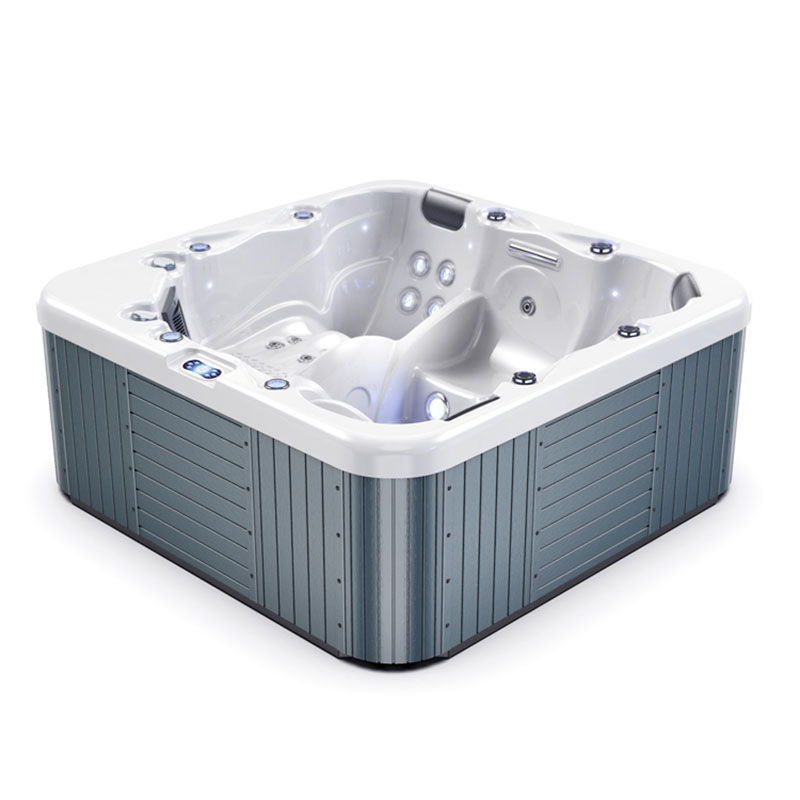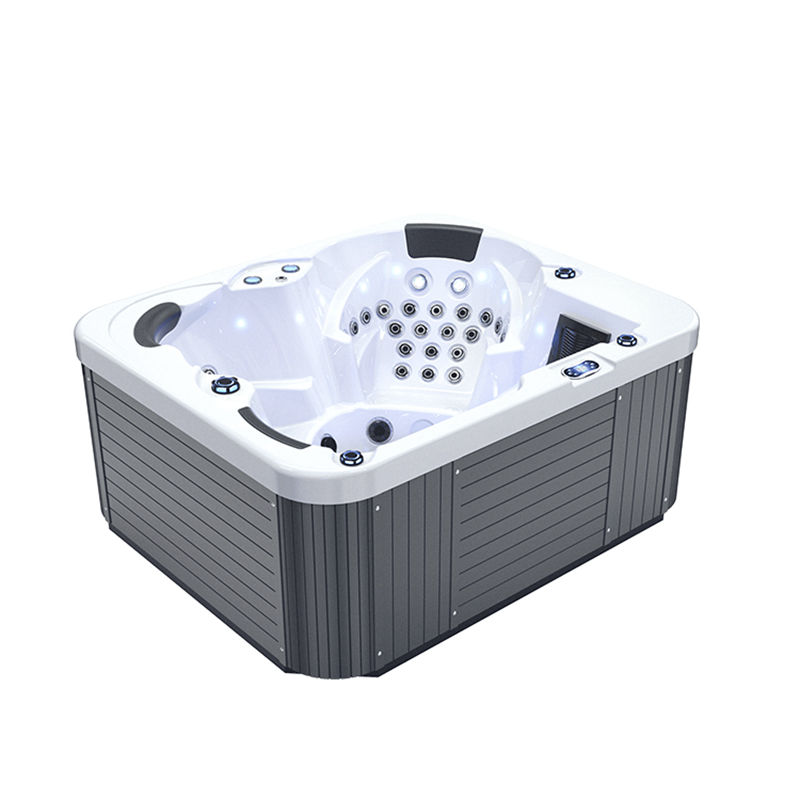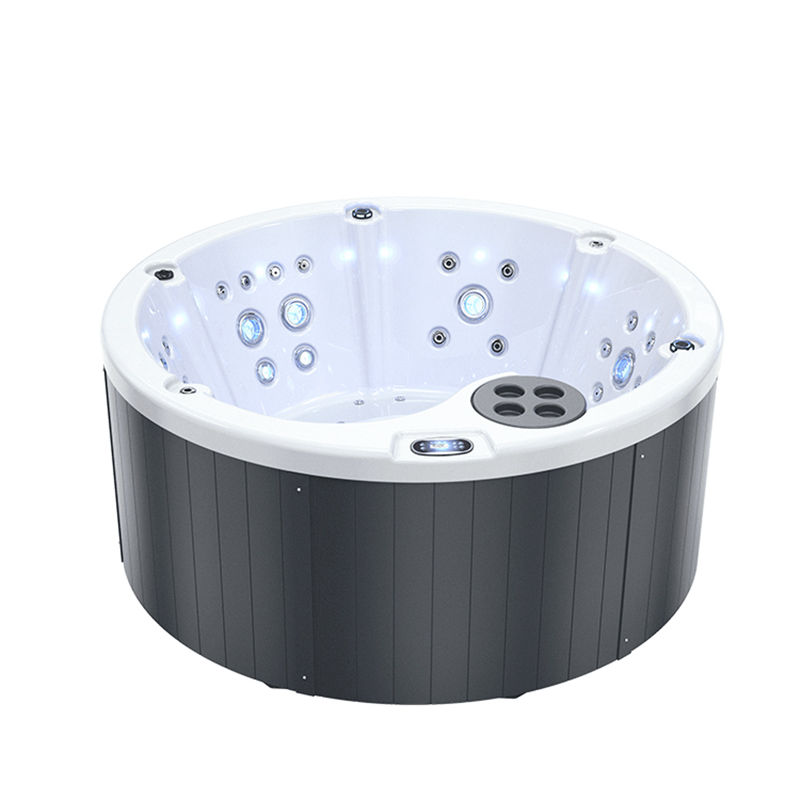Among various spa products, swim spa tubs and hot tubs are the two most common devices. Both can provide relaxation, fitness and treatment functions, but there are also significant differences between them. Although swim spa tubs have the dual functions of swimming exercise and hydrotherapy massage, they are not perfect. Compared with traditional hot tubs, swim spa tubs have obvious shortcomings in some aspects.
This article will explore the disadvantages of swim spa tubs compared to hot tubs in depth to help consumers make wise decisions when choosing.
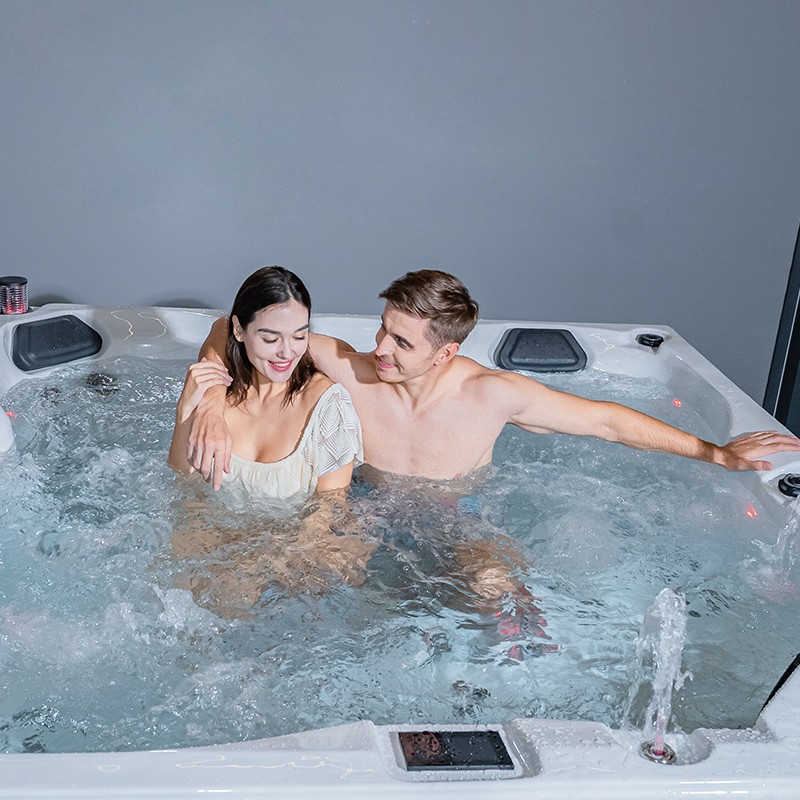
Cons of swim spa tubs compared to hot tubs:
1. High initial purchase cost
2. Large footprint and low adaptability
3. High operating cost
4. Complex operation and maintenance
5. Long heating time
6. High maintenance and repair requirements
7. High energy consumption and low environmental protection
1. High initial purchase cost
A significant disadvantage of swim spa tubs is their high initial purchase cost. Compared with hot tubs, swim spa tubs have a more complex structure and more diverse functions, so the overall cost is higher. Depending on the brand, model, and size, a swim spa tub typically costs between $10,000 and $30,000, while a hot tub generally costs between $5,000 and $15,000. For families or individuals with limited budgets, a swim spa tub may be a more challenging investment.
In addition, in addition to the cost of the equipment itself, the installation fee of a swim spa tub is also higher. Due to its larger size and complex water and electricity requirements, installing a swim spa tub usually requires more time and professional assistance. Compared to a hot tub, the installation process of a swim spa tub involves more steps, including foundation preparation, power access, and plumbing system layout, which further increases the initial cost.
2. Large footprint and low adaptability
The large footprint is another major disadvantage of a swim spa tub compared to a hot tub. A swim spa tub is designed to provide swimming exercise and hydrotherapy massage, so it usually requires more space than a hot tub. A typical home swim spa tub is usually 12 to 20 feet long (about 3.7 to 6 meters) and about 6 to 8 feet wide (about 1.8 to 2.4 meters). In contrast, hot tubs are much smaller, usually occupying a square or round area of about 7 to 8 feet (about 2.1 to 2.4 meters).
This large size means that not all homes are suitable for installing a swim spa tub. Especially for homes with limited space, urban apartments or small courtyards, the installation and use of swim spa tubs may be restricted. Hot tubs are more flexible and can adapt to more different outdoor or indoor locations, so they have significant advantages in space utilization.
3. Higher operating costs
The operating costs of a swim spa tub are usually higher than those of a hot tub, which are mainly reflected in water volume, electricity costs and maintenance costs.
● Water volume and heating costs:
The water capacity of a swim spa tub is much larger, usually holding 1,000 to 2,500 gallons of water, while the water capacity of a hot tub is around 300 to 600 gallons. Due to the large water volume, swim spa tubs take longer to heat up and require more electricity. Especially in cold climates, maintaining the water temperature in a swim spa tub requires running the heater for a long time, which results in higher electricity bills. In contrast, hot tubs are smaller and require less time to recover, resulting in lower electricity bills.
● Circulation and filtration:
Due to the large water volume in a swim spa tub, the circulation and filtration systems need to run more frequently to keep the water clean. This means that the pumps and filters in the swim spa tub consume more electricity and resources. Compared with hot tubs, swim spa tubs have more complex equipment and consume more electricity.
● Chemical use and maintenance:
Swim spa tubs with larger water volumes require more chemicals (such as chlorine or bromine) to keep the water quality stable. At the same time, the time and cost of cleaning and maintenance are also higher. Swim spa tub equipment requires regular cleaning and filter replacement to ensure the normal operation of the equipment and the health of the water quality. Hot tubs are relatively easy to maintain, with less chemical usage and cleaning frequency, and more advantageous long-term operating costs.
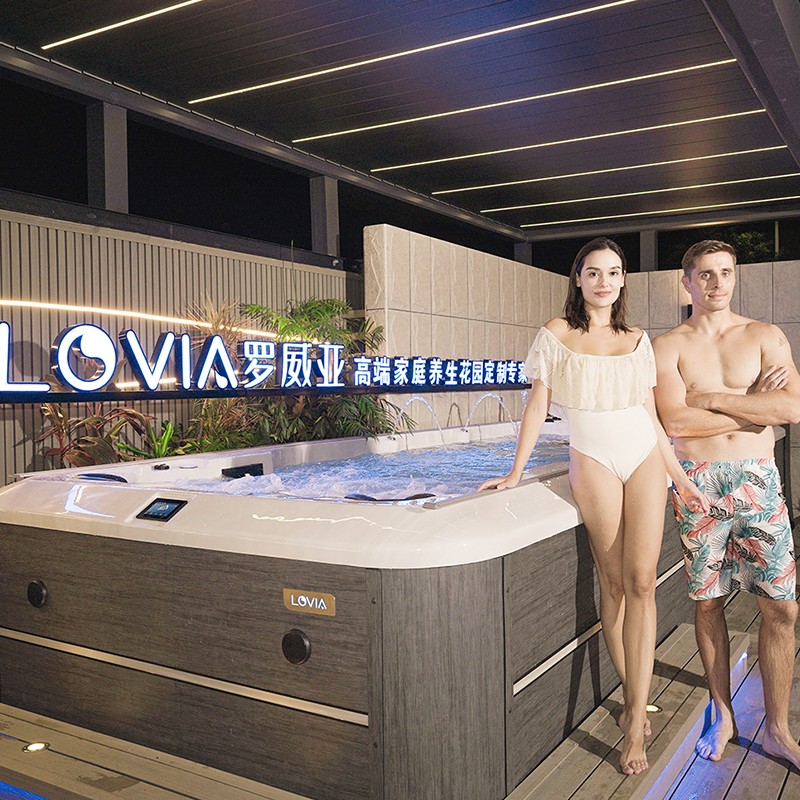
4. Complex operation and maintenance
Swim spa tubs are more complex to operate and maintain than hot tubs. This is because swim spa tubs have more diverse equipment functions, including swimming exercise functions and hydrotherapy massage functions. Their complex systems usually include multiple pumps, nozzles, water flow control devices and heating devices. This means that users need to spend more time learning how to operate these devices and ensure that the functions are working properly when using swim spa tubs.
● Water flow system adjustment:
The swimming function of the swim spa tub relies on an adjustable water flow system, which is used to create antagonistic flow for users to swim exercise. Adjusting the speed and intensity of these water flows requires a certain technical foundation, and users need to be familiar with the control panel and setting options of the equipment. Compared with hot tubs, swim spa tubs are more complex to operate, especially for those who just want to enjoy the simple hydrotherapy massage, it may be troublesome to learn these operations.
● More frequent maintenance:
The cleaning and maintenance of swim spa tubs is more frequent and complex than hot tubs. Due to the large amount of water and diverse functions, the filters of swim spa tubs need to be checked and cleaned regularly, and water quality monitoring must also be more rigorous. In addition, the maintenance of swim spa tub components such as heaters, pumps and nozzles is also cumbersome. If these devices are not maintained regularly, it may cause system failure and even shorten the life of the equipment.
● High maintenance costs:
Since swim spa tub equipment is more complex than hot tubs, the maintenance costs of any failure are usually higher. If there is a problem with a pump, filtration system or heater, users may need to call in a professional technician to inspect and repair it. Hot tubs are simpler in design, and equipment maintenance is relatively easy and inexpensive.
5. Long heating time
Swim spa tubs take significantly longer to heat up than hot tubs. Due to the large water capacity of swim spa tubs, it takes a long time to heat the entire body of water to the appropriate temperature. In winter or cold climates, especially when the water temperature is significantly different from the ambient temperature, the heater needs to work continuously for several hours to raise the water temperature to the ideal state.
In contrast, hot tubs have a small amount of water and usually only take 1 to 2 hours to heat to the ideal spa temperature (usually 100°F to 104°F). This makes hot tubs more convenient to use, especially for those who decide to enjoy hydrotherapy at short notice, the rapid heating function of hot tubs is undoubtedly an advantage.
Long heating time not only affects the flexibility of use, but also increases electricity bills. Even if some swim spa tub equipment is equipped with insulation measures such as insulation covers, the larger water body will still lead to more heat loss, especially when the equipment is not in use. The energy consumption is also higher.
6. High maintenance and repair requirements
Swim spa tubs require much higher maintenance and repair requirements than hot tubs. As mentioned earlier, the system of swim spa tubs is more complex and involves multiple key components. The failure or damage of any component may cause the entire equipment to stop operating, and the maintenance cost will increase accordingly.
● Complex system leads to increased maintenance difficulty:
Since the swim spa tub combines swimming and hydrotherapy functions, its mechanical system is more complex than that of a hot tub, involving multiple pumps, heaters, nozzles and water flow regulation systems. Troubleshooting and repair usually requires professional technicians to complete, and users are less likely to repair it themselves.
● High maintenance frequency:
Since the water body of the swim spa tub is larger, impurities and pollutants in the water are more likely to accumulate. Therefore, users need to check water quality more frequently, adjust the balance of chemicals in the water, and clean the filter system. Although these maintenance tasks are also required on hot tubs, they are relatively less difficult and less frequent due to the small water volume and low frequency of use.
7. High energy consumption and low environmental protection
Swim spa tubs consume significantly more energy than hot tubs, especially in heating and water circulation. Swim spa tubs require multiple pumps and heaters to run for a long time, which will undoubtedly increase energy consumption. In contrast, hot tubs are small in size and require less energy, which not only reduces electricity bills but is also more environmentally friendly.
With rising energy costs and people's increasing demands for environmental protection, the high energy consumption of swim spa tubs has become an issue that cannot be ignored. Although some advanced swim spa tub equipment is equipped with energy-saving technology, its overall energy consumption is still high compared to hot tubs.

What kinds of promotional offers does Lovia Spa have?
We frequently run factory promotions including seasonal discounts, free customization options, and special prices for new product launches. Our promotions are available to wholesale buyers and repeat customers looking to purchase high-quality spa products at a discount. Stay connected with our sales team for the latest promotions and sales events that help you save on purchasing without sacrificing product excellence.


